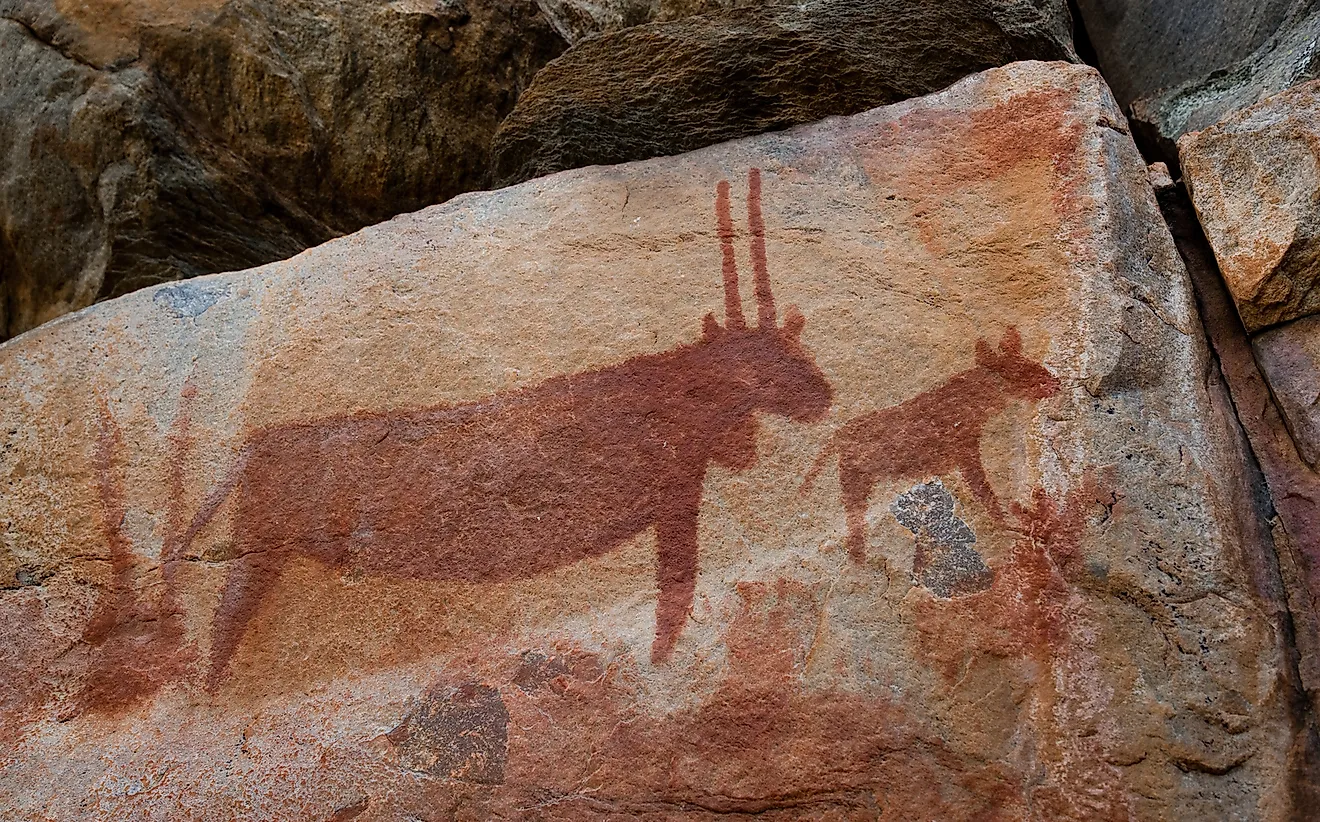What is Tsodilo Rock Art?

The Tsodilo Rock Art is located in the Tsodilo Hills in the Ngamiland District in Botswana, a country on the African continent. The Tsodilo Hills, which consists of four chief hills (three are known as the ‘male hill’, ‘female hill’, ‘child hill’), is a UNESCO World Heritage Site due to the the ancient rock art within the hills. The art is drawn in white or red paint: the white paintings are attributed to the Bantu people while the red paintings are attributed to the San people. Notable cave locations at the site are the Rhino Cave, the White Paintings Rock Shelter, and the Depression Rock Shelter Site. Archaeologists have excavated many items from the caves, including charcoal, shell fragments, stone artifacts made mostly from quartz or jasper, prepared projectile points, bone samples, and jewelry.
Tourism
About 24 miles away is the small town of Shakawe. Shakawe serves as a starting point for tourists who want to visit the Tsodilo Hills which can be reached via car or via small airplane as the managed campsite that sits between the the tallest hills has an airstrip for planes to land. The campsite boasts a small museum as well as showers and toilets. The major draw for tourists is that the Tsodilo Hills has some of the highest concentrations of known rock art: the 3.86 square miles contain over 4,500 rock paintings.
Discoveries
The Male Hill is one of the tallest hills in all of Botswana, standing at a height of 1,400 meters (4,593 feet) above sea level. The Tsodilo Hills area holds great cultural and spiritual importance to the San people who live in the Kalahari Desert and the site is believed to have been used as a hub of ritual, life, and painting for thousands of years. UNESCO estimates the hills have about 500 different individual sites: some of the rock art paintings at the site have been dated at roughly 24,000 years old while others are as recent as the mid 1800s. The area is also unique for having uncovered the oldest mongongo nuts that have ever been found. They were discovered in the Rock Shelter Depression site. At two of the archaeological sites (called Nqoma and Divuyu) archaeologists have uncovered evidence of Early Iron Age metal artifacts. Subsequently, these two sites might have been iron smelting areas. The sites are among the few in southern Africa where evidence of metal working from the Early Iron Age has been found.
Notable Paintings and Depressions
The Rhino Cave on Female Hill is named after the notable white rhino paining on the wall, since it is the only white painting in this cave. Next to the rhino painting is a painting of a red giraffe.Around the giraffe and the rhino are varied paintings of red geometric shapes. Across from these paintings are depressions and grooves that archaeologists believe were ground into the rock using hammer stones from the Later Stone Age period. Also on Female Hill is the Depression Rock Shelter Site which is named after the man-made depressions on the walls. The site contains red paintings of cattle and more geometric shapes. Male Hill holds the White Paintings Rock Shelter—where the majority of white paintings and a few red paintings are located. The white paintings in these cave depict both domestic and wild animals as well as humans. Some of the humans are on horseback. This indicates that the images are more recent, as horses were only introduced to the region in the middle of the 19th century.
Threats and Conservation
Due to its remote location, the Tsodilo Hills is well-preserved. Archaeological work must comply with regulations and any holes dug for archaeological purposes are refilled once the work is completed so that the strata and deposits remain intact for the future. Over the years the amount of visitors and tourists to the Tsodilo Hills has grown, but the mandatory guided tours have minimized graffiti and vandalism. Instead, the largest concern is the increased litter that accompanies the greater amount of tourists.











